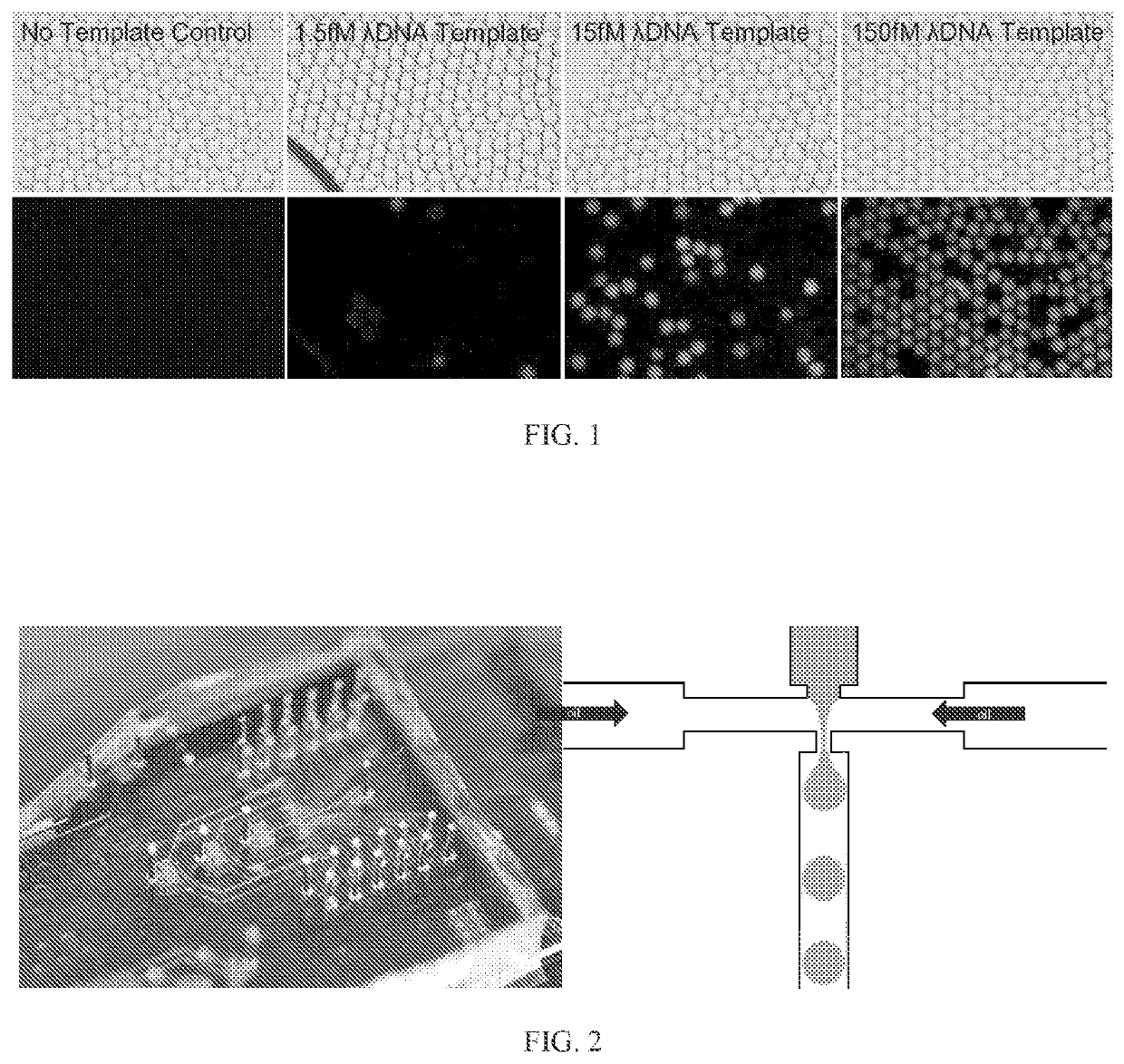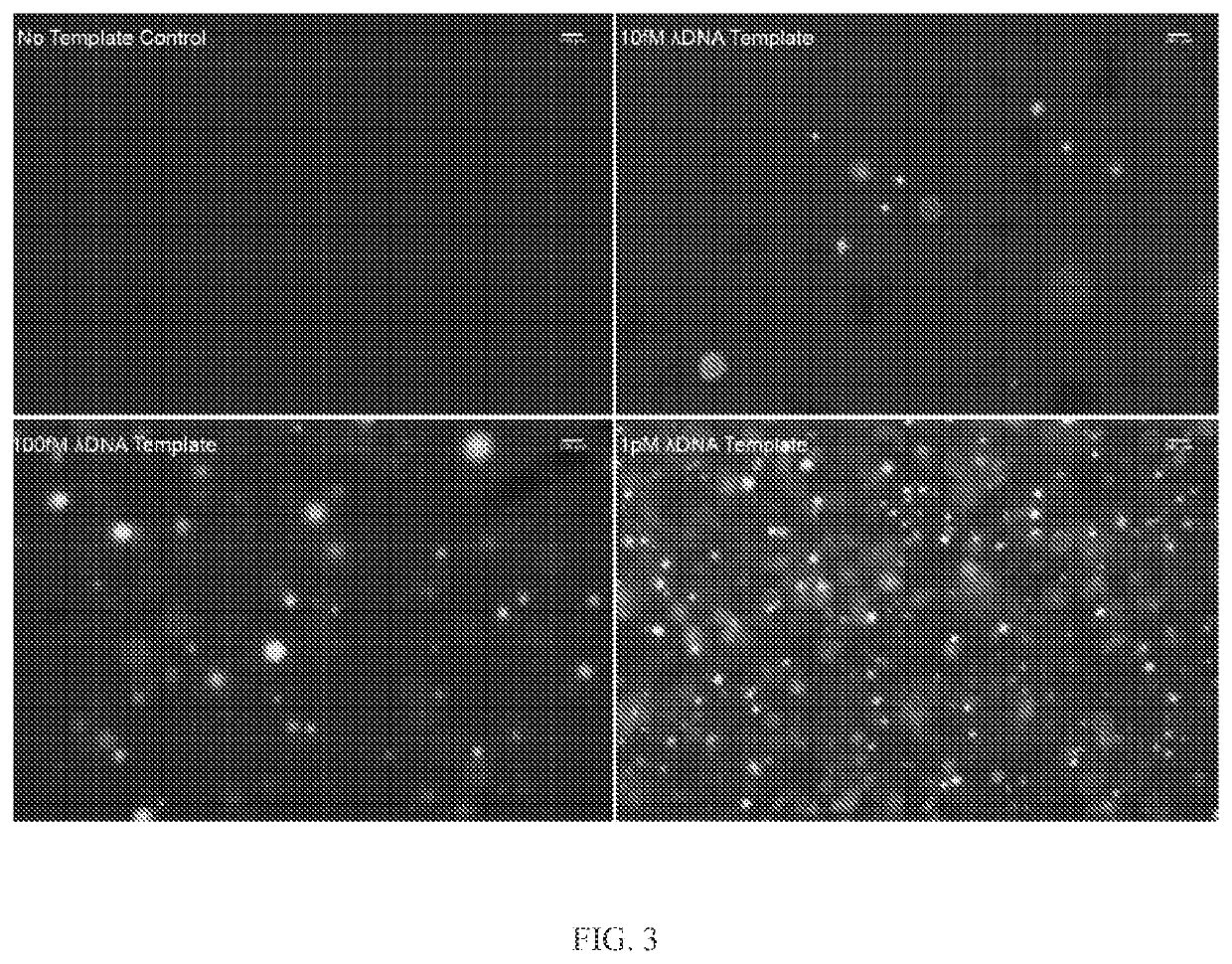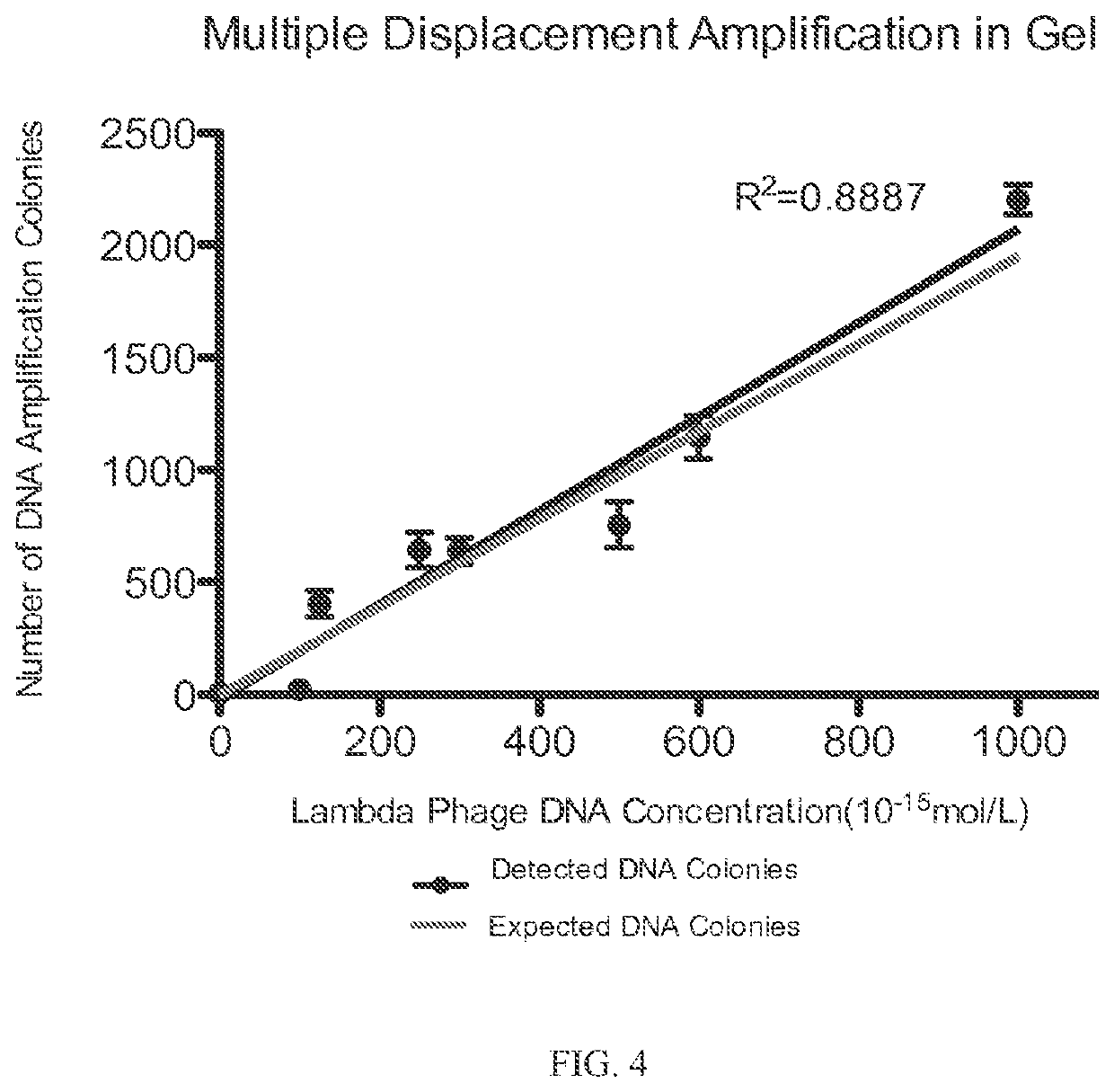Methods for quantitating DNA using digital multiple displacment amplification
a technology of multiple amplification and quantitation method, applied in the field of methods for quantitating nucleic acids, can solve the problems of insufficient basis on which inability to distinguish composite genomes assembled from metagenomic data, and inability to accurately model the response of single-gene studies, etc., to reduce the impact of contaminates and reagent costs, improve the reliability and throughput of single-cell wga, and eliminate background amplification background
- Summary
- Abstract
- Description
- Claims
- Application Information
AI Technical Summary
Benefits of technology
Problems solved by technology
Method used
Image
Examples
example 1
dic Droplets
[0095]Fabricating the Microfluidic Devices.
[0096]Microfluidic devices were constructed using standard PDMS soft lithography (McDonald J C, et al. (2000) Fabrication of microfluidic systems in poly(dimethylsilox-ane). Electrophoresis 21:27-40) with 18 micron SU8-on-Si wafer molds formed using transparency masks from FineLine Imaging. After curing, the PDMS device is adhered to glass for 2 hours at 80° C.
[0097]Multiple Displacement Reaction.
[0098]The MDA reactions were prepared according to protocol (Qiagen Repli-G Midi Kit) with Lambda DNA added to 5e-5, 5e-4, and 5e-3 ng / μL in the standard samples. Each reaction was supplemented with 0.3% Tween-20 and Evagreen prior to drop formation. Drop and bulk samples incubated at 30° C. for 16 h, and 65° C. for 20 m. Half of the post-incubation drop samples were converted to bulk with half volume 1H,1H,2H,2H-Perfluoro-1-octanol (Sigma Aldrich) and half of the post-incubation bulk samples were made into drops.
[0099]Forming Monodispe...
example 2
Matrices
[0108]FIGS. 3-6 depict MDA reactions in a gel matrix with lambda phage genome as a template, which is representative of single genome amplification as well as single cell analysis.
[0109]FIG. 3 depicts digital MDA products at 30° C. after 16 hours stained with 500 nM SYTOX Orange dye in 7% 4-Arm PEG Acrylate-Dithiol hydrogels. The initial Lambda Phage DNA template concentrations were 10 fM, 100 fM, and 1 pM. (or convert to mass / volume, 1.3e-5 ng / μL, 1.3e-4 ng / μL, and 1.3e-3 ng / μL).
[0110]FIG. 4 depicts a multiple displacement amplification in gel. The figure depicts the number of DNA amplification colonies observed vs. initial lambda phage DNA concentration in 4-arm PEG acrylate gel after 16 hours of multiple displacement amplification. DNA was stained with 500 nM SYTOX Orange.
[0111]FIG. 5 depicts 216 bp PCR products using Vent(exo-) polymerase (a polymerase with strong strand displacement) after 40 thermal cycles stained with 500 nM SYTOX Orange dye in 7% 4-Arm PEG Acrylate-D...
example 3
and Methods
[0113]4-Arm PEG Hydrogel. Hydrogel components, including 4-arm PEG acrylate (MW 10,000) and HS-PEG-SH (MW 3,400), were obtained from Layson Bio. For every 25 μl of 10% weight percentage cross-linked hydrogel, 1.6 mg of 4-arm PEG acrylate and 1.1 mg of HS-PEG-SH were dissolved in PBS buffer (Invitrogen). It was briefly vortexed and centrifuged to ensure mixing and it was allowed to sit for 10 minutes while the hydrogel components cross-linked through the reaction between the thiol and acrylate groups
[0114]Polymerase Chain Reaction (PCR). The primers used for PCR on purified λ, DNA (48 kbp, NEB) were purchased from IDT. Primer F 5′: CGGCAAACGGGAATGAAACGCC. Primer R 5′: TGCGGCAAAGACAGCAACGG. A 25 μl hydrogel PCR reaction consisted of 2 U of VentR(exo-) polymerase (NEB), 1× ThermoPol Reaction Buffer (NEB), 0.4 mM dNTP (NEB), 1 μM Primers, 5% DMSO (Sigma), 0.5 mg / ml BSA (NEB), 1.6 mg 4-arm PEG acrylate in PBS, 1.1 mg HS-PEG-SH in PBS, and DNA template (NEB) of various concentr...
PUM
 Login to View More
Login to View More Abstract
Description
Claims
Application Information
 Login to View More
Login to View More - R&D
- Intellectual Property
- Life Sciences
- Materials
- Tech Scout
- Unparalleled Data Quality
- Higher Quality Content
- 60% Fewer Hallucinations
Browse by: Latest US Patents, China's latest patents, Technical Efficacy Thesaurus, Application Domain, Technology Topic, Popular Technical Reports.
© 2025 PatSnap. All rights reserved.Legal|Privacy policy|Modern Slavery Act Transparency Statement|Sitemap|About US| Contact US: help@patsnap.com



